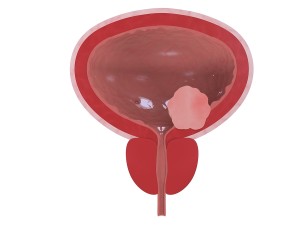Introduction
In 1995 bladder cancer was newly diagnosed in 50,000 U.S. citizens (37,000 males and 13,000 females) and 10,000 died in that year from this dreaded disease (7,500 males and 2,500 females). In men bladder cancer accounts for about 2% of all cancers, which is about 7% of all urinary tract cancers.
The bladder is an organ with a lot of blood vessels and blood flow in its tissues. This along with early invasion of the muscle layer of the bladder wall is the reason for the poor longterm outcome even to this day (Ref. 1) with bladder cancer. Click on the links regarding causes, pathology, symptoms of bladder cancer, diagnostic tests, staging and treatment.
References
1. Cancer: Principles&Practice of Oncology. 5th edition, volume 1. Edited by Vincent T DeVita, Jr. et al. Lippincott-Raven Publ., Philadelphia,PA, 1997.
2. Cancer: Principles &Practice of Oncology, 4th edition, by V.T. De Vita,Jr.,et al. J.B. LippincottCo.,Philadelphia,1993.Chapter 34, page 1054 (data from text arranged as a table).
3. M Simoneau et al. Oncogene 2000 Dec 19(54): 6317-6323.
4. G Dalbagni , HW Herr Urol Clin North Am 2000 Feb 27(1): 137-146.
5. HW Herr J Clin Oncol 2001 Jan 1;19(1): 89-93.
6. DA Corral, CJ Logothetis World J Urol 1997; 15(2): 139 – 143.
7. PM Dodd et al. J Clin Oncol 1999 Aug;17 (8): 2546- 2552.
8. B. Sears: “The age-free zone”.Regan Books, Harper Collins, 2000.
9. Conn’s Current Therapy 2004, 56th ed., Copyright © 2004 Elsevier
10. Ferri: Ferri’s Clinical Advisor: Instant Diagnosis and Treatment, 2004 ed., Copyright © 2004 Mosby, Inc







